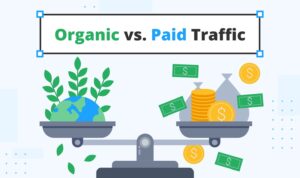Think. Create. Convert
Explore expert articles on SEO, social media, content, and more

Are PDF Files SEO-Friendly? Best Practices for Optimizing PDF Documents
In the constantly evolving world of digital marketing and online visibility, Search Engine Optimization (SEO) plays a critical role in determining how readily people can find your content. Blogs, landing pages, and product pages often take center stage in SEO strategies. Yet, another type of content that frequently goes overlooked in these conversations is PDF files. Many companies and organizations use PDFs for brochures, whitepapers, eBooks, and annual reports. However, one question that often arises is, “Is a document SEO friendly?” This question becomes particularly relevant for PDF documents, which some people assume are not easily indexed by search engines like Google. The reality, though, is that PDFs can be SEO-friendly, provided you take the necessary steps to optimize them. In this extensive guide—spanning over 2,400 words—we’ll explore every facet of PDF optimization for SEO. We’ll bust myths, discuss best practices, and dive deep into how you can ensure your documents stand out in search results. By

Which is More Effective for Multilingual SEO: Subdomains or Subdirectories?
Table of Contents Introduction: Why Multilingual SEO Matters Subdomains vs. Subdirectories: The Core Differences The Basics of Multilingual SEO Pros and Cons of Using Subdomains Pros and Cons of Using Subdirectories Comparing Subdomains and Subdirectories for Global Reach Technical Considerations You Shouldn’t Overlook 5 Common Questions About Subdomain vs Subdirectory for Multilingual SEO Real-World Examples and Case Studies Best Practices and Actionable Tips Conclusion: Making the Right Choice for Your Business Introduction: Why Multilingual SEO Matters Expanding your digital presence beyond your home market can be a game-changer for your brand. A well-executed multilingual SEO strategy opens the door to international audiences by offering content in multiple languages. This not only broadens your customer base but also helps build brand credibility across diverse markets. However, one critical question remains: Which structure should you use to optimize your website for multilingual SEO—subdomains or subdirectories?In this in-depth guide, we’ll answer that question by

How to Rank for ‘Near Me’ Keywords: A Complete Guide for Local SEO
Are you looking for effective ways to boost your local search visibility and dominate “near me” keywords on Google? You’ve come to the right place. This complete guide will walk you through everything you need to know about how to rank for the words “near me”—from understanding how “near me” queries work to optimizing your website, local listings, and content to bring more foot traffic and phone calls. Table of Contents Introduction: The Rise of “Near Me” Searches Understanding “Near Me” Keywords Question 1: Why Are “Near Me” Keywords Important for Local SEO? Optimizing Your Website for “Near Me” Searches Leveraging Local Business Listings and Citations Question 2: What Is the Significance of Local Citations in “Near Me” Searches? Google Business Profile (GBP) and Map Pack Optimization Question 3: How to Track and Measure the Success of “Near-Me” Optimization? On-Page SEO for Local Landing Pages Question 4: Which Marketing Channels

What Distinguishes Unpaid Search Traffic from Paid Search Traffic?
Table of Contents Introduction What Is Search Traffic? Unpaid Search Traffic Explained Paid Search Traffic Explained Key Differences Between Unpaid and Paid Search Traffic 5 Common Questions & Answers About Search Traffic Best Practices for Generating and Balancing Your Search Traffic Conclusion & Strong Call to Action 1. Introduction In today’s digital-centric business environment, search engines drive a massive amount of online traffic. Every day, billions of searches are conducted, and these searches bring people closer to the products, services, and information they need. For businesses, being visible on search engine results pages (SERPs) can make or break marketing efforts. However, there are two primary types of search visibility: unpaid (organic) and paid. If you have ever wondered what distinguishes unpaid search from paid search traffic, you are in the right place. In this comprehensive guide, you will learn the defining characteristics of unpaid search traffic versus paid search traffic. You

The 422 Status Code: What It Means and How to Handle It
Introduction In the world of web development and APIs, HTTP status codes play a vital role in helping both developers and end-users understand the result of a particular request. One of the more confusing yet increasingly important status codes in modern application development is the 422 status code, also known as “Unprocessable Entity.” If you’ve ever encountered this error while building a RESTful API, working with eCommerce platforms, or sending data to a server, you know that resolving it can be tricky. In this comprehensive guide, we’ll break down exactly what the 422 status code is, why it appears, and how you can effectively resolve or prevent it from occurring. We’ll also share best practices for debugging your code, validating your input, and ensuring that your applications run smoothly. Whether you’re a seasoned developer or just getting started, understanding the 422 status code can help you keep your projects running efficiently and your users

Is YouTube Social Media? Understanding Its Role in Digital Marketing
YouTube is an online behemoth, boasting over 2 billion logged-in monthly users. Yet, it sparks an ongoing debate in the digital marketing realm: Is YouTube considered social media? While some view it as a video-sharing platform, others see it as an interactive community hub akin to Facebook or Instagram. Let’s dive deep into this discussion to understand YouTube’s role in digital marketing and how businesses like yours can leverage its potential. What is YouTube? Before we delve into whether YouTube qualifies as social media, it’s essential to understand its core functions: Core Functions of YouTube: Video Hosting Platform: YouTube allows users to upload, view, and share video content across various niches. Whether educational, entertainment, or promotional, the platform provides a space for creators to express themselves and reach audiences. Community Engagement: Features like comments, likes, shares, and subscriptions enable users to interact directly with creators and other viewers, fostering an ecosystem of community building and
Don’t Get Left Behind! Join the Digital Marketing Revolution—Start Your Journey Today!
In your consultation, you’ll receive:
Whether you’re starting from scratch or looking to improve your current strategy, this free session is your first step toward real digital success.





